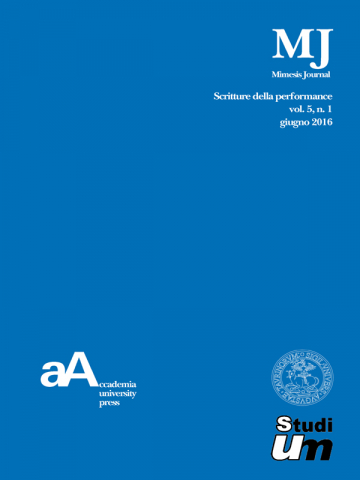Il corpo come archivio
Volontà di ri-mettere-in-azione e vita postuma delle danze
DOI:
https://doi.org/10.4000/mimesis.1109Abstract
The performance studies scholar André Lepecki has done a thorough analysis of the body as archive analyzing three contemporary dance pieces as re-enactments (Julie Tolentino’s re-enactment of Ron Athey’s Self-Obliteration #1 in her series The Sky Remains the Same [2008 and ongoing]; Martin Nachbar’s Urheben Aufheben [2008] returning to some items of the Dore Hoyer’s solo series titled Affectos Humanos; Richard Move humorous impersonation of Martha Graham). Lepecki proposes a «“will to archive” as referring to a capacity to identify in a past work still no-exhausted creative field». For Lepecki, the end of a performance is the new beginning of a dance’s afterlife, which permits the work to undergo numerous permutations and manifestations. He continues: «The archive as border becomes the vertiginous skin where all sorts of onto-political “rewritings” take place, including the re-writing of movement, including the re-writing of the archive itself». Here, Lepecki refers primarily to the notion of being able to access or enter the bodily archive through re-enactment of a choreographic work. Lepecki’s idea of porousness within the dance archive and focus on the living dancer as a carrier of the archive, which can then be shared with others is especially poignant.


